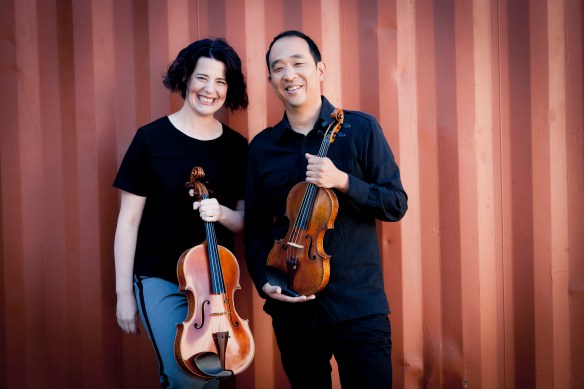by Gabriela Tedeschi

Composer Orlando Jacinto Garcia takes it as a compliment when listeners tell him his music is strange. That’s what he’s going for.
“The reaction from someone that says, ‘Your music is very strange, but very beautiful,’ that doesn’t in any way, shape, or form offend me,” Garcia said. “On the contrary, I take that as kind of reaching the goal that I want.”
Garcia is less interested in traditional harmony and melody than he is in exploring the timbre and color of instruments with his music. Drawing influence from minimalist composers and the New York School of composers, including his former mentor Morton Feldman, he also works to change listeners’ perception of time.
“I usually do this by using materials that are somewhat restricted that slowly unfold over time with the hope that the listener will be caught up in the moment and once the work is over, they won’t know whether the work was two minutes long or two hours long,” Garcia said. “It creates kind of a subjective time as opposed to an objective or chronological time.”

This Friday, the Seattle Modern Orchestra presents the world premiere of Garcia’s new piece, the clouds receding into the mountains for viola and ensemble, featuring violist Melia Watras. the clouds receding manages to intermix musical fragments with long, angular melodic and harmonic lines, bringing the fragments together at the end of the piece in a more intuitive way to create the sense of subjective time. But because of this trademark quality, the form of the piece presented challenges for Garcia.
“Any time I write a piece for a soloist and an ensemble there are challenges because right off the bat, when you think of a solo work with an ensemble, you think of a traditional virtuosity,” he said. “My music is not really directed toward that virtuosity so I’m looking at some other aspects of technique and control from the soloists.”
Whenever Garcia writes works that feature a soloist, he has a specific performer in mind, one whose sound color and control of their instrument inspire him. Hearing Watras play during a Seattle Modern Orchestra performance in 2015 led him to begin working on this piece.
“Melia played The Viola in My Life by Morton Feldman, my mentor, and I was very taken by her playing,” Garcia said. “The sound that she has, the control that she has.”

Garcia stayed in touch with Watras after the performance and began discussing a work for a violist and chamber orchestra. Together, they approached the Seattle Modern Orchestra about premiering this piece.
As Garcia began to compose, he studied recordings of Watras playing in order to tailor the work to her specific strengths. Understanding her sound was pivotal for Garcia’s unique approach to the solo line. He wanted to create something beautiful and complex enough to keep the performer engaged, but also stay true to his aesthetic.
“The emphasis is on the beautiful sound and the beautiful tone that she has and her beautiful control over the instrument,” Garcia said.
Also on the program are Beat Furrer’s Aria for soprano and six instruments and György Ligeti’s Melodien for chamber orchestra. Furrer is known for his exploration of the human voice. In Aria, making use of extended techniques, he integrates the percussive soprano line with the instrumentals to create an eerie and suspenseful interlocking pattern of quick, jarring sounds.
Ligeti, pioneer of micropolyphony, utilizes a three-layered texture in Melodien, with a melody, secondary ostinato-like figures, and long, sustained notes in the background. Over time, he allows the layers to blur and interact, creating a beautifully dense, complex sound.
It’s the perfect ending to a program that brings texture and timbre to the forefront of music, exploring new ways to interpret time and layers of sound.
Seattle Modern Orchestra’s upcoming concert, The Clouds Receding, is this Saturday, April 14 at 8pm at the Chapel Performance Space at the Good Shepherd Center. A pre-concert interview with composer Orlando Jacinto Garcia will take place at 7:30pm. For tickets and more information, please click here.










 Learn about this and many more issues of feminism in classical music at Dr.
Learn about this and many more issues of feminism in classical music at Dr.